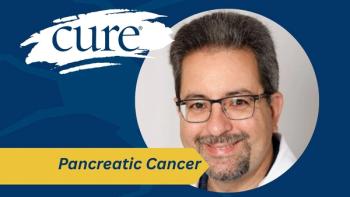
Chemoimmunotherapy Results Based on Performance Status for Patients With Extensive-Stage Small Cell Lung Cancer
Chemoimmunotherapy was tested in patients with extensive-stage small cell lung cancer to determine its effect based on different performance statuses.
Patients with extensive-stage small cell lung cancer (ES-SCLC) with limited mobility or ability of self-care should be considered for treatment with immunotherapy, according to the findings of a recent study.
For patients with ES-SCLC, treatment is typically an immune checkpoint inhibitor plus platinum/etoposide as the main first-line therapy. Chemoimmunotherapy approvals based on previous phase 3 trials have allowed for patients with ES-SCLC to obtain proper treatment, although these clinical trials tend to exclude patients with a performance status of 2 or 3 when gaugued by the Eastern Cooperative Group (ECOG)— a scale which, according to the ECOG-ACRIN Cancer Research Group, has been used for more than 40 years to describe “a patient’s level of functioning in terms of their ability to care for themself, daily activity and physical ability. The scale ranges from 0 (“Fully active, able to carry on all pre-disease performance without restriction”) to 5, which is death.
Researchers, in a study published Aug. 7 in the journal Cancer, found that data regarding patients with ECOG status of 2 and 3 (capable of self-care but unable to work and up and about for more than half of waking hours versus capable of limited self-care and confined to a bed or chair for more than half of waking hours, respectively) remains limited.
A retrospective ananlysis of 82 patients with ES-SCLC with a mean age of 68.1 who received chemoimmunotherapy via the Mayo Clinic Health System between January 2016 and January 2021 found that, according to study authors, there was “no significant diffence” regarding overall survival (the time following treatment when a patient is still alive, regardless of disease status) or progession-free survival (the time following treatment that a disease does not worsen) between patients with ECOG performance status of 0 to 1 or 2 to 3.
Patients who were included in the study were 18 years or older, had received a biopsy-proven diagnosis of ES-SCLC and had had initial chemoimmunotherapy treatment. Patients who received other forms of therapy, had rapidly progressing ES-SCLC and received two cycles of chemotherapy before the initial chemoimmunotherapy were excluded from the overall study.
Each patient received platinum/etoposide and Tecentriq (atezolizumab) therapy after primary ES-SCLC diagnosis and both groups were divided based on performance status (56 patients in in the 0 to 1 performance status group and 26 patients in the 2 to 3 performance status group). Within both groups, patients remaining in the 0 to 1 group were more likely to receive second-line therapy compared to the 2 to 3 group. Alongside this, the 0 to 1 group had a higher rate of second progression in comparison with the 2 to 3 group.
The overall response rate for the 0 to 1 group was 51.8%, and 61.5% for those with a performance status of 2 or 3. When evaluating the overall survival between both groups, there was no difference observed. A majority of both groups showed disease progression (87.5 % of patients in the 0 to 1 group and 73.1% of patients in the 2 to 3 group), and no differences were evident in either group when it came to progression-free survival.
Treatment was discontinued among some patients in the 0 to 1 group due to complications such as immunotherapy-mediated colitis, immunotherapy-mediated hepatitis, immunotherapy-mediated pneumonitis, immunotherapy-mediated acute kidney injury, immunotherapy-mediated radiculopathy and hospitalization for acute hypoxic respiratory failure. Within the 2 to 3 group, treatment was discontinued due to immunotherapy‐mediated colitis, immunotherapy‐mediated hepatitis, immunotherapy‐mediated myositis, immunotherapy‐ mediated encephalopathy and septic shock.
For more news on cancer updates, research and education, don’t forget to





